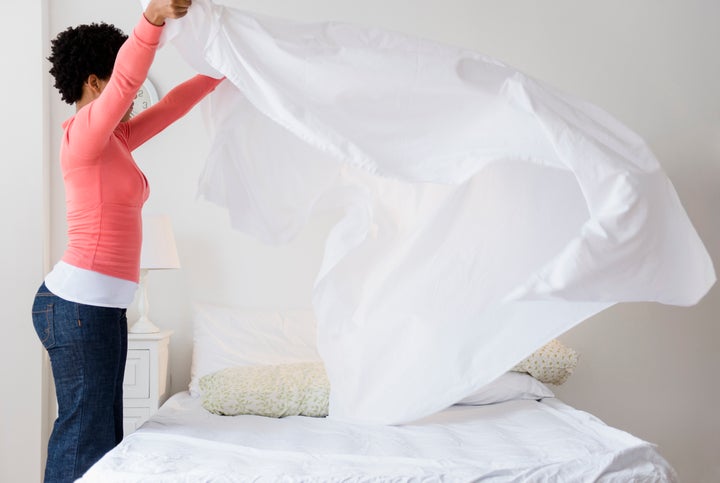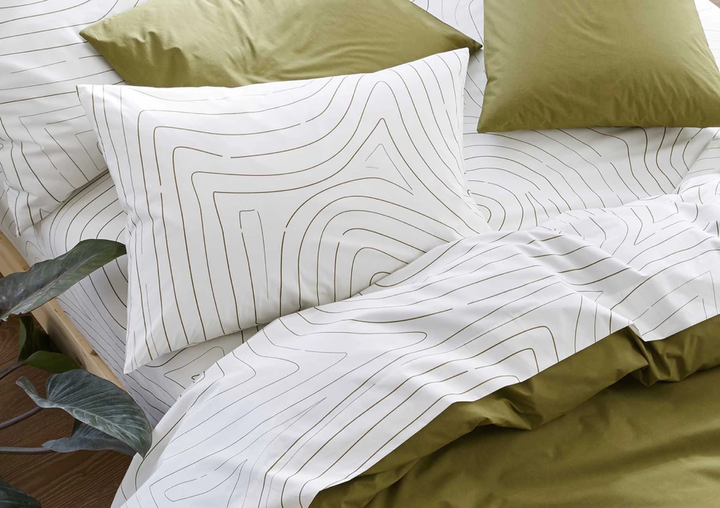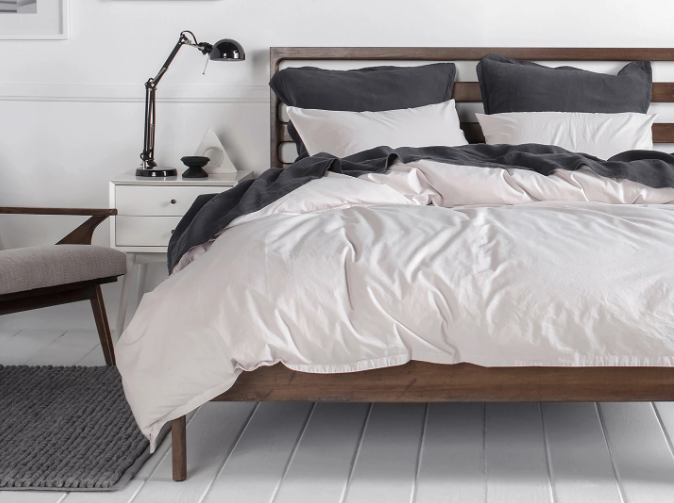HuffPost may receive a share from purchases made via links on this page.

It’s time to start giving a sheet about what’s on your bed. In the past, you may have picked up whatever bedding set was on sale or paired well with the color of your comforter. But just as your quest for a good night’s sleep changes over time, so does your taste.
Sheets should be taken seriously, and you deserve a hotel-quality bed that makes you excited to go to sleep each night. You may be lusting after the rumpled linen look or a silk satin set, but what should you actually be looking for when it comes to buying sheets? Is the answer in a higher thread count? Is it the Egyptian cotton they sing about in “Uptown Girls”?
Tossing and turning at night, we were afraid we were overpaying for sub-par sheets — so we went to the bedding experts at Brooklinen and Parachute for some advice. In return, they gave us a lot to consider when shopping for sheets, and we’ve narrowed it down to the top five. Here’s what they had to say.

1. Look for longer fiber lengths.
Long-staple cotton is some of the strongest fiber out there, according to Vicki Fulop, co-founder of Brooklinen. “In the case of cotton, a longer staple is a better staple. Longer cotton fibers can be spun into stronger, finer yarns, and produce extremely smooth and supple weaves. Shorter fibers can poke out of the weave, leading to a coarser, weaker fabric.”
Sheet sets made with longer fibers should be clearly labeled on the package as having long-staple cotton.
2. Stick to single-ply yarn types.
Don’t let the term “single-ply” fool you. Unlike with toilet paper, multi-ply doesn’t necessarily mean more comfort when it comes to sheets. On the contrary, according to Fulop.
“[Single-ply yarn] can only be spun from long-staple cotton, and results in light, soft, yet extremely long-lasting sheets,” Fulop said. “Multi-ply yarns are a group of weaker fibers twisted together to create a false strength. They use mostly lower-grade, shorter-staple cottons, which result in thicker, coarser and heavier threads.”
3. It’s the finer threads in life.
Just like you can’t spin straw into gold, you don’t get a fine product when you start with subpar materials. You use your bedding every single night (and it comes in direct contact with your skin), so it’s important to use safe, quality materials. Unfortunately, the term “organic” is often misused or manipulated when labeling textiles, according to Ariel Kaye, founder and CEO of Parachute.
“The term “organic” is often misused or manipulated when labeling textiles.”
“Fibers grown organically – but processed with toxic chemicals – may still carry the organic label,” Kaye said. “‘Wrinkle-free” or ‘permanent press’ labels should be avoided because manufacturers treat these fabrics with formaldehyde resin, a toxic chemical. Instead, you should look for bedding that is Oeko-Tex certified, meaning free of harmful chemicals or toxins — all of our products are.”

4. Keep thread count in mind.
Here’s your annual reminder that a higher thread count doesn’t always mean a higher quality sheet. “Thread count is the number of threads woven together in a square inch of fabric,” Fulop said. “As the thread count rises, the fabric becomes softer, denser and warmer.”
“A super high thread count can actually indicate the presence of a lower-quality sheet.”
- Vicki Fulop, co-founder of Brooklinen
So, what’s with those sheet sets with really high thread counts?
“Thread counts advertised in excess of 500 are often misrepresented by manufacturers in order to trick customers,” Fulop said. “They count not just each thread, but each ply spun together within each thread. As multi-ply construction is often used to strengthen lower-grade cotton, a super high thread count can actually indicate the presence of a lower-quality sheet.”
5. It’s all about the weave.
Though you might not consider the weave of your sheets much before you purchase, it can be a big factor in how they ultimately look and feel.
“Linen is often a favorite as it works year-round whether you sleep hot or cold,” Kaye said. “It’s crafted with hollow fibers that absorb moisture from the air and release it again as humidity levels shift, which regulates the temperature to keep you cool in the summer and warmer in the winter.”
While percale and sateen are both made of cotton, the fabrics are distinguished by the distinctive ways in which they are woven.
“Percale’s classic, one-over-one-under weave makes it an exceptionally breathable fabric with a simple, matte finish. The cool, crisp-to-the-touch nature of Percale often appeals to sleepers that run warm at night,” Kaye shared. “Sateen, on the other hand, has a unique four-over-one-under weave, which gives it a subtle, luxurious luster. Because of the tighter weave of the fabric, it tends to run warmer and is a favorite among sleepers that are cool throughout the night.”
Like what you see? Sign up for HuffPost’s sales and deals newsletter for more editor-sourced products and reviews. And check out HuffPost Coupons for promo codes from brands you trust, like Bed Bath & Beyond and Home Depot.
